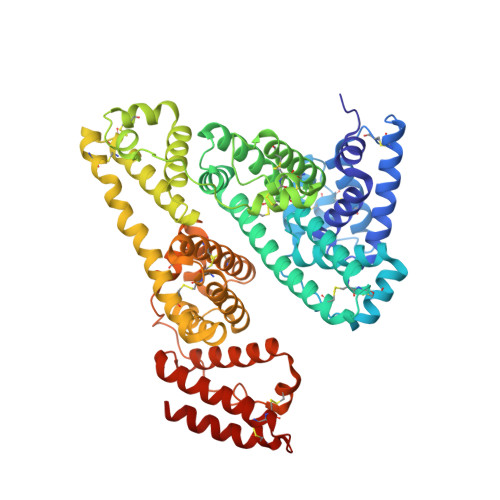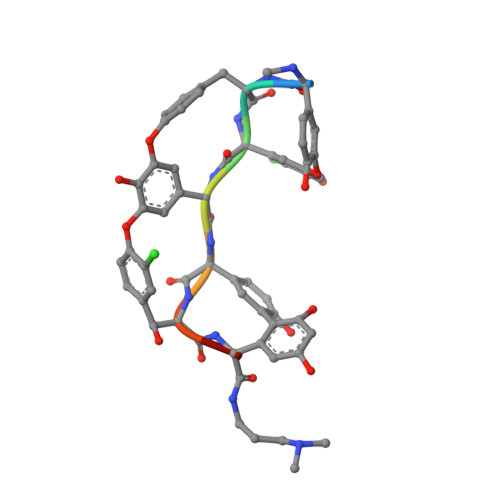Structural Basis for the Binding Mechanism of Human Serum Albumin Complexed with Cyclic Peptide Dalbavancin.
Ito, S., Senoo, A., Nagatoishi, S., Ohue, M., Yamamoto, M., Tsumoto, K., Wakui, N.(2020) J Med Chem 63: 14045-14053
- PubMed: 33183011
- DOI: https://doi.org/10.1021/acs.jmedchem.0c01578
- Primary Citation of Related Structures:
6M5D, 6M5E - PubMed Abstract:
Cyclic peptides, with unique structural features, have emerged as new candidates for drug discovery; their association with human serum albumin (HSA; long blood half-life) is crucial to improve drug delivery and avoid renal clearance. Here, we present the crystal structure of HSA complexed with dalbavancin, a clinically used cyclic peptide. Small-angle X-ray scattering and isothermal titration calorimetry experiments showed that the HSA-dalbavancin complex exists in a monomeric state; dalbavancin is only bound to the subdomain IA of HSA in solution. Structural analysis and MD simulation revealed that the swing of Phe70 and movement of the helix near dalbavancin were necessary for binding. The flip of Leu251 promoted the formation of the binding pocket with an induced-fit mechanism; moreover, the movement of the loop region including Glu60 increased the number of noncovalent interactions with HSA. These findings may support the development of new cyclic peptides for clinical use, particularly the elucidation of their binding mechanism to HSA.
- ROD (Single Crystal Analysis) Group, Application Laboratories, Rigaku Corporation, 3-9-12 Matsubara-cho, Akishima, Tokyo 196-8666, Japan.
Organizational Affiliation:

























